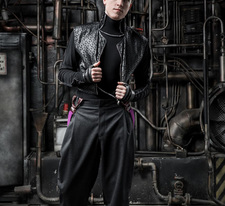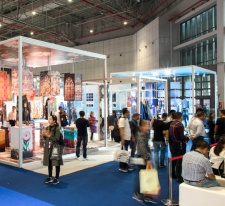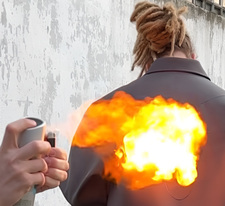Where is it better to order fabrics?
The production of fabrics for designer collections in today's global world is carried out in different parts of the planet. How are they different? Does the place of production affect the quality of materials? Of course, any professional from the fashion industry will confirm. At the same time, business leaders often trust an already tested supplier and are not ready to take risks. Or maybe it's worth a try? Why does special attention to the materials from which clothes are made today become the key to success? The answer can be found in analytics. According to RBC, in two years the younger generation Z (also called post-millennials), which differs from the previous ones in their preferences, will make up 40% of allglobal buyers of clothing and accessories. It is those who are not yet 18 who are much more serious about what they wear than previous generations (including not fully understood millennials).

By the way, both they and those who were born at the turn of the century have two interesting features: commitment to their favorite label and a careful approach to the quality of the fabric. The younger generation prefers organic cotton, eco-leather and faux fur, clothes made of hemp, linen, viscose and silk. News about new trends and novelties of fashion spread instantly thanks to social networks, which means that in order to survive, clothing manufacturers need to respond quickly to the requests of young people. At the same time, the cut itself, the silhouette may not change not only during the year, but also for several seasons in a row. It is enough to change the print, decorative elements, accessories and fabric. Quite well and successfully, this production model was mastered by those designers and labels who concentrated on making clothes from hemp and organic cotton.

Hemp, although it causes some concern to the manufacturer (try to grow such a field), but today it becomes the most expensive material, often defeating even a somewhat tired silk. By the way, in Russia things made of hemp cloth have been worn since ancient times, and the first jeans in the world were created from a mixture of cotton with hemp fiber. However, today hemp clothing is unlikely to be affordable for the average buyer: ordinary summer trousers will cost about 30−50 thousand rubles. The price includes both the unique qualities of the fabric and its incredible popularity among the elite (all stars have a couple of things made of hemp fiber in their wardrobe). The fact is that such a fabric, although produced quite easily and cheaply, has several amazing qualities: it does not deform, kills germs, gives coolness, has a beneficial effect on the skin. Which, by the way, our ancestors knew about. One of the leaders in sewing hemp fiber clothing brand Seeker. Its buyers do not expect the originality of the cut: baggy footblocks and trousers from collection to collection change only color, and grow in price a little more. The production of such fabric today brings great profits to those who are willing to work on the development of their business. Cannabis grows everywhere, by the way, it is planted in particularly frequent rows and it can no longer be used for illegal use.

Organic cotton (grown without the use of chemicals, harvested by hand, genetically modified seeds are not used and energy-saving technologies are used) is now a favorite among designers in Northern Europe. This is where customers prefer this expensive cotton option. The most expensive is grown in Egypt, a little less expensive is supplied by numerous Asian producers. India remains the leader in the production of cotton clothing such as cambric, marquisette for well-known brands. Active in the market of sewing clothes made of thick cotton Vietnam. Natural silk is losing its position, but young people are happy to spend a lot of money on silk products. Silk is also different from silk, especially since many Chinese manufacturers have long been offering mixed fabric, with different percentages of cotton fiber additives to silk. Nevertheless, the demand of designers for high-quality Chinese silk is not falling. However, the print quality is not always up to par. With the variety of prices on the market, it is difficult to find the perfect quality here. Plus, the wage growth of factory workers is also pulling up the prices of materials from China.

Luxury fashion houses prefer Italian fabrics: silk, wool and even kid leather. But an ordinary manufacturer has a place to go outside of Italy. Many young designers from all over the world began to travel to Tibet. Not to pray for the success of the business, but in search of suppliers of interesting natural fabrics. And small batches of clothes, the fabric for which was woven in mountain villages by illiterate peasant women, can now be found in many European cities. But more and more clothing manufacturers are heading to Cambodia: it is here that fabrics are made from unique cocoons of the golden silkworm, and in many villages you can order hand-woven silk fabrics, as we have already told earlier. The Chinese market today began to sink due to the rapid development of Moroccan manufactories and small factories. Here, many fashion brands, such as Jaded London, order fabrics for their collections. Why Morocco? Firstly, they produce incredibly high-quality viscose fabric, almost indistinguishable from silk. Secondly, it often becomes more profitable to place an order there in terms of price-quality ratio than to persuade the Chinese to lower the price. And third: in Morocco managed to establish the highest print quality, without blurred rasters or fuzziness. Each drawing can be viewed almost with a magnifying glass. The Iranian production of wool and cotton fabrics is also beginning to gain lost positions, but so far it has not caught up with China, Cambodia, Vietnam and Morocco with Egypt.
Photo: open sources.









